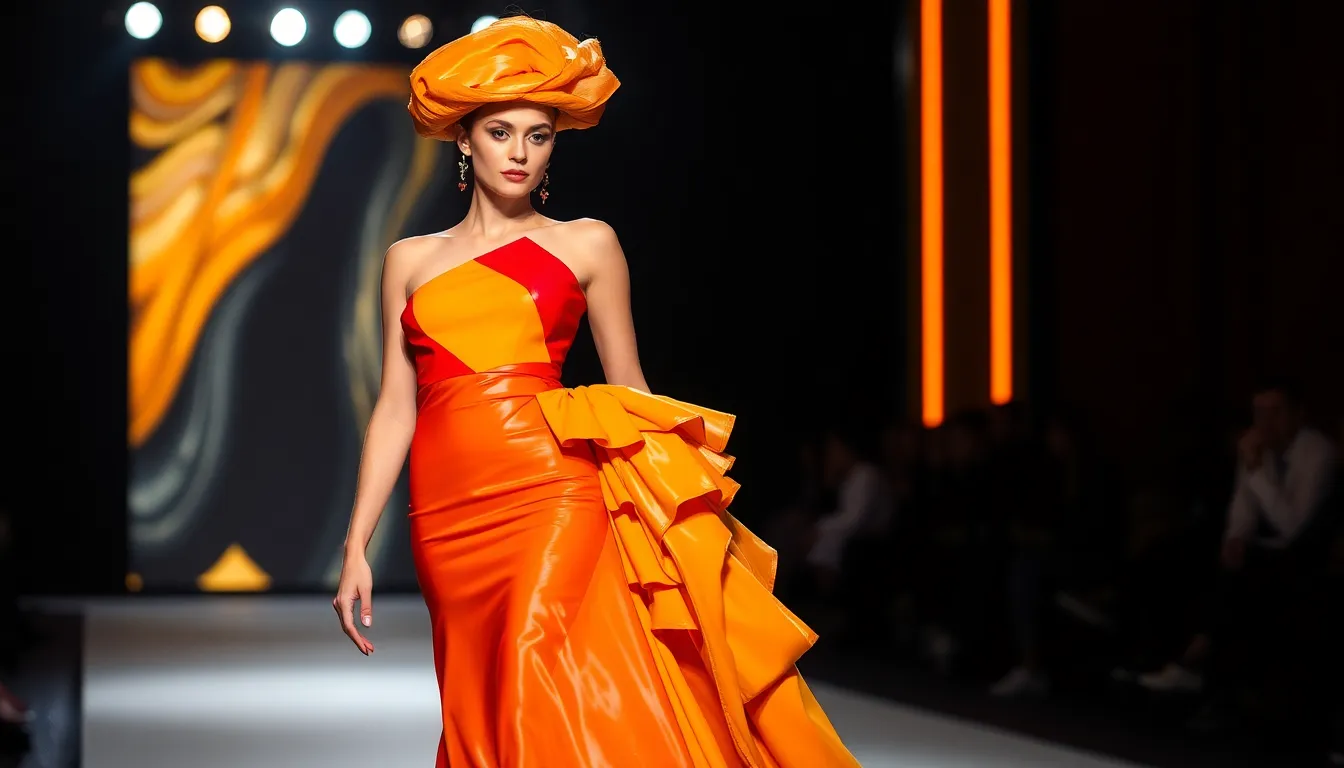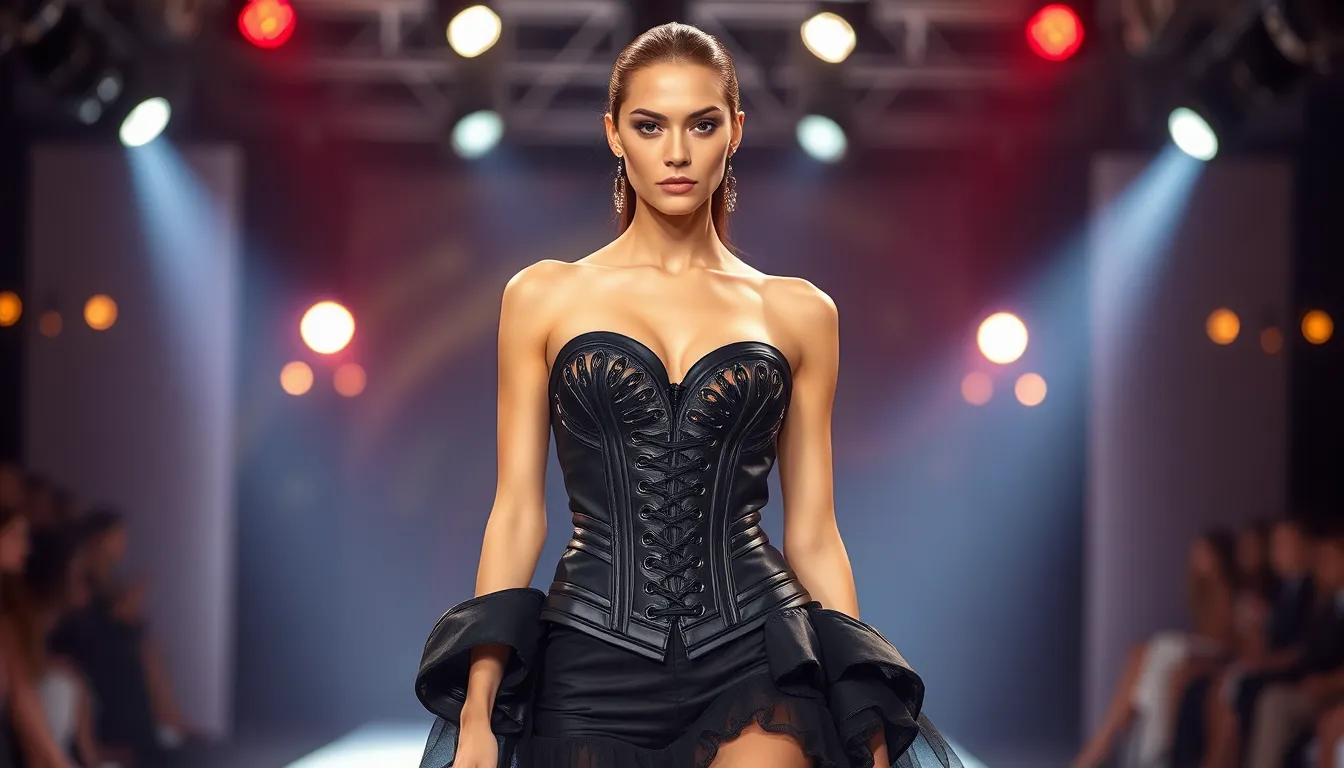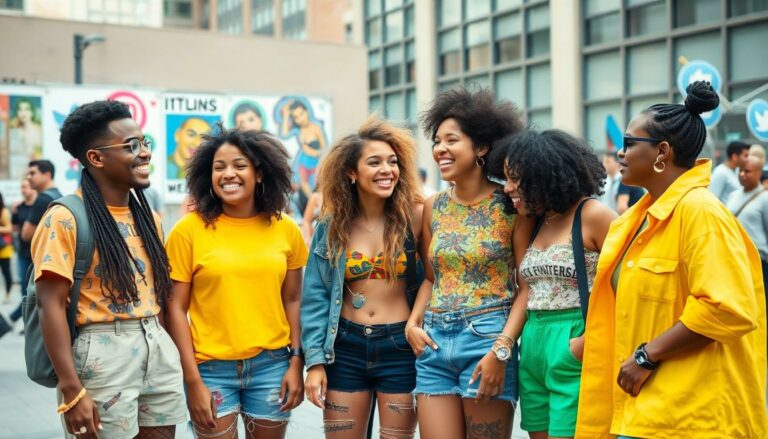Jean Paul Gaultier isn’t just a name; it’s a fashion revolution wrapped in a corset and sprinkled with a dash of punk. Known for his daring designs and boundary-pushing aesthetics, Gaultier’s haute couture collections are a wild ride through the world of high fashion. From the iconic cone bra to his playful take on gender norms, he’s mastered the art of making statements that turn heads and raise eyebrows.
Imagine stepping into a world where fashion meets art, and every piece tells a story. Gaultier’s creations are not just clothes; they’re conversations waiting to happen. Whether he’s drawing inspiration from the streets of Paris or the depths of the ocean, there’s always a twist that keeps fashionistas on their toes. Buckle up as we dive into the flamboyant universe of Jean Paul Gaultier haute couture, where elegance and eccentricity dance hand in hand.
Jean Paul Gaultier Haute Couture
Jean Paul Gaultier’s legacy defines the evolution of haute couture. He elevated fashion to a form of expression, intertwining bold creativity with social commentary.
Early Life and Influences
Born on April 24, 1952, in Arcueil, France, Gaultier’s early exposure to fashion came from his grandmother, a seamstress. His childhood fascination with clothing led to a career in design. He drew inspiration from diverse sources, including street culture and art movements. Influence from Parisian life shaped his aesthetic, making it both glamorous and provocative. Life’s contrasting elements inspired his bold visions and concepts.
Rise to Prominence
Gaultier’s ascent began in the late 1970s when he gained traction for his innovative designs. His first collection showcased a mix of punk styles and haute couture techniques. Participation in the Paris Fashion Week further distinguished him in the industry. Gaultier’s iconic cone bra worn by Madonna in 1990 crystallized his status as a fashion visionary. He challenged norms, merging gender identities and cultural symbols in his creations. His unique vision captured international attention, leading to collaborations and exhibitions that celebrated his artistry.
Iconic Haute Couture Collections

Jean Paul Gaultier’s haute couture collections stand out for their creativity and boldness. Each collection tells a story that combines fashion and art in an unforgettable way.
Notable Runway Shows
Runway shows serve as platforms for Gaultier’s theatricality. The Spring/Summer 1997 collection featured models adorned in nautical themes, celebrating his love for the sea. In 2013, the “Fashion Icon” show showcased his mastery in blending past and present styles. Gaultier’s Fall/Winter 2014 show presented a striking contrast with punk elements, pushing boundaries on gender and identity. Each performance captures the audience’s attention and sparks conversations about fashion’s role in society.
Signature Styles and Techniques
Gaultier is known for innovative materials and unexpected silhouettes. Employing corsetry techniques, he emphasizes the female form while challenging traditional femininity. The iconic cone bra illustrates his unique approach, merging sexuality and fashion. Layering fabrics of different textures creates visual interest and depth in his pieces. He utilizes bold colors and prints, resulting in a captivating aesthetic that is unmistakably his. Each design reflects his vision of fluidity in fashion, breaking barriers and setting trends that resonate throughout the industry.
The Impact on Fashion
Jean Paul Gaultier’s influence on fashion extends far beyond his own collections. His daring designs create ripple effects, inspiring numerous designers to adopt unconventional aesthetics. Young creatives embrace his fusion of street style and haute couture as a hallmark of innovation. He often defies gender norms, encouraging others to explore identity through fashion choices. Gaultier’s iconic pieces, particularly his use of corsets and asymmetry, shape industry standards and ignite discussions about craft and creativity.
Influence on Other Designers
Numerous designers reference Gaultier’s work in their own collections. His bold silhouettes challenge the status quo and inspire emerging talents. Designers like Alexander McQueen and Olivier Rousteing draw upon his theatrical elements, infusing their collections with daring narratives. The blending of punk and elegance in Gaultier’s creations encourages others to take risks, pushing them to think outside traditional boundaries. His influence resonates through collaborations, runway presentations, and editorial spreads, cementing his role as a transformative figure in fashion.
Cultural Significance
Culturally, Gaultier’s designs reflect societal shifts and conversations around identity. Iconic pieces, such as the cone bra, challenge beauty standards and foster dialogue about femininity. His work often incorporates diverse cultural references, promoting inclusion and celebrating differences. Gaultier’s runway shows routinely blend art with commentary, making statements about social issues through fashion. He encourages wearers to express individuality, leading to a broader acceptance of varied styles and identities in mainstream culture. The legacy of his contributions shapes not only fashion but also cultural conversations.
Collaborations and Innovations
Jean Paul Gaultier’s journey through haute couture showcases remarkable collaborations and pioneering techniques that redefine fashion boundaries.
Partnerships with Artists
Gaultier frequently collaborates with artists across various mediums, enriching his collections and bringing diverse perspectives to his work. Notable partnerships include those with visual artists like Pierre et Gilles, whose vibrant aesthetics complement Gaultier’s dramatic designs. His engagement with performers and musicians extends to icons like Madonna, whose iconic cone bra became synonymous with both Gaultier’s vision and pop culture. Such collaborations create a dynamic interplay of fashion and art, enabling Gaultier to push creative limits while influencing contemporary narratives. These synergies foster an immersive experience that resonates with audiences beyond the runway, blending the worlds of couture and creative arts.
Pioneering Fashion Techniques
Innovative fashion techniques define Gaultier’s legacy, showcasing his mastery over design and craftsmanship. He often employs unconventional materials, such as plastic and metal, to challenge traditional fabric choices. Asymmetry and layered textures become hallmarks of his collections, emphasizing unique shapes that celebrate the human form. Gaultier’s commitment to corsetry serves not only as a tribute to historical fashion but also as a vehicle for modern expression. Such pioneering approaches allow him to create striking silhouettes, elevating haute couture into realms of narrative and emotion. Each technique reflects his philosophy that fashion is an evocative language, communicating deeper meanings beyond mere aesthetics.
Conclusion
Jean Paul Gaultier’s haute couture journey is a testament to the transformative power of fashion. His daring designs and innovative techniques continue to inspire and challenge the industry. By merging art with fashion, Gaultier creates pieces that resonate on multiple levels, inviting wearers to express their individuality.
His legacy thrives in the way he reshapes beauty standards and promotes inclusivity. With each collection, he pushes boundaries and sparks conversations about identity and societal norms. Gaultier’s work is not just about clothing; it’s a celebration of creativity that encourages future generations of designers to explore and redefine their own narratives.




